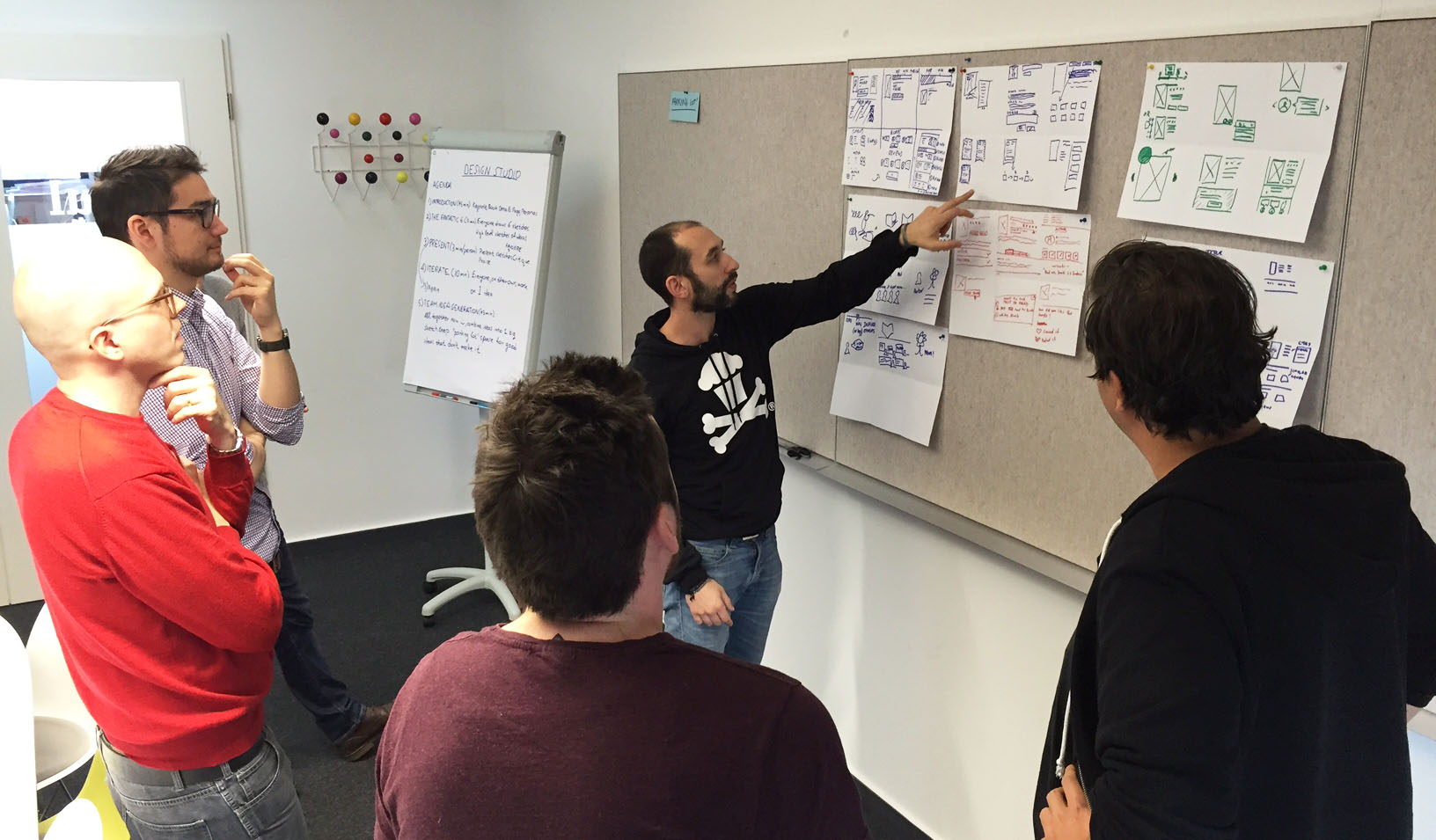Article
The Design Studio Method
Design Studios are a Lean UX method that help multidisciplinary teams come up with a lot of ideas to solve a well-framed problem. We used it many times in our latest project, Vorablesen, so I’d like to share my thoughts and experiences of applying it.

How it works
Start with a problem. Correction: start with a well-defined problem. If the problem you’re trying to solve is “increase our traffic,” or “get more paying customers,” then no matter how many smart people you put together, you’re never going to come up with a clear, testable solution. We tried once with the problem “how can we offer good community options instead of a forum?” and while the ideas were good, and the discussions around them led to useful conclusions, we never came up with an actionable idea to prototype and test.
Team size is also important. Jeff Bezos’ two pizzas rule of 4-5 people (“a team shouldn’t be larger than the number of creative directors needed to order two pizzas”) works in this case too. Sorry creative directors. Less than 3 people and you end up coming up with, and politely agreeing on using, the same ideas. More than 5 people and you’ll never agree on a solution.
You can find the correct procedural details online, or in the nice Lean UX book by Jeff Gothelf, but here’s how we practiced Design Studios in our project:
- Problem definition: The team is presented with personas, user journeys, existing states, constraints, and desired outcomes, and asks any questions they may have before starting to think of ideas. Don’t be afraid to rephrase the question after talking to the team—this is a discussion, and discussions often reveal hidden complexities or opportunities. This took us around 15-30 minutes.
- Diverge: Everyone (silently) draws as many ideas as they can come up with in 10 minutes on a piece of paper folded in 6. They can be UI sketches, abstract ideas, or even just a phrase; it doesn't matter, as they’ll explain the concepts to the team later. Everyone has 3 minutes to present their ideas, and only productive critique focusing on the problem (like “this solution solves the problem in this way, but doesn’t solve it here...”) is allowed. Comments such as “I like this idea,” or “why do we only have two pizzas?” are not useful feedback for the idea creator.

- Iterate: Having received feedback, everyone goes back to another 10 minutes of silent drawing, and works on either one of their sketches or another person’s idea, or even combines them to make new ones. Then they present again, each for 3 minutes.
- Converge: Having discussed many solutions, the team collectively decide on choosing and refining one that they will implement in the sprint. If the design problem wasn’t broken down enough you may end up with many solutions, each mapped to its own problem. That’s still ok, just don’t have more than one solution to a problem. Park any remaining useful ideas in a bucket for future use, and congratulate your team for the good work. This can take up to 45 minutes. The step, not the congratulations.
Total process time: around 2 hours
Total number of ideas produced: more than 30
Not bad.
The benefits
We generate a lot of different ideas from people who have very different perspectives on the project. With Vorablesen, some of the most user friendly ideas came from our backend developer. That doesn’t mean that Niall made a poor career choice in becoming one, but rather that in siloed working it’s hard to consider all 3 aspects of a feature—business value, usability, and technical feasibility.
More importantly, we build a shared understanding of the problem and the solution we plan to implement. This is not something that you can achieve with an email, a task list or, worse, a long list of requirements, no matter how detailed they are. This probably deserves an entire blog post of its own, but the gist of it is this: the most successful way of building a shared understanding of what to build as a team comes from getting them to discuss, critique, think of, point at, occasionally argue on, and conclude with ideas together.
And a Design Studio is a very good tool for getting team members to do just that.
Wanna try it?
If you have a solid problem that you don’t know how to tackle (or if you need help formulating one), get in touch and we can arrange a Design Studio for your team, either at your place or ours.
Pizza’s on us :).